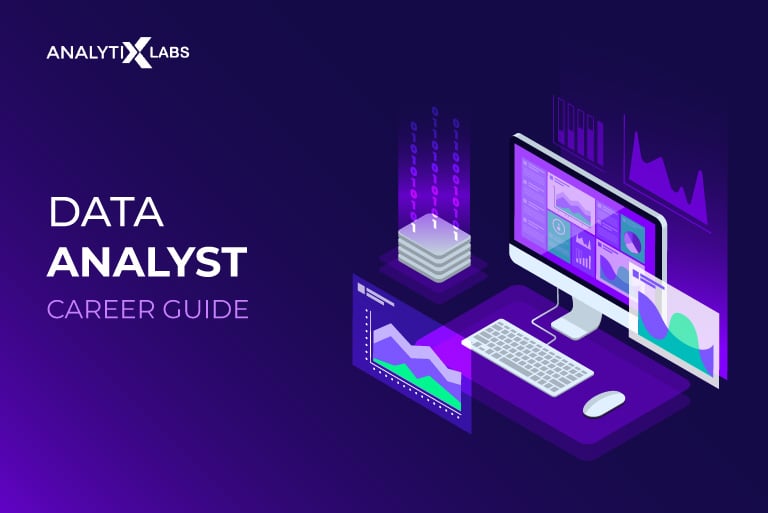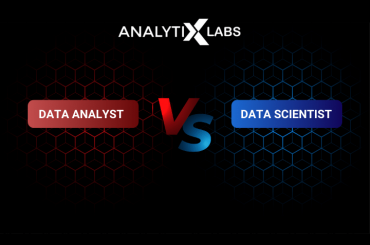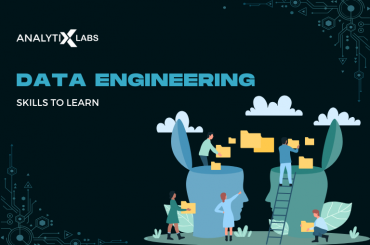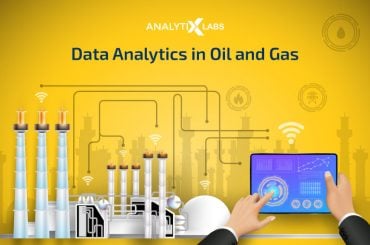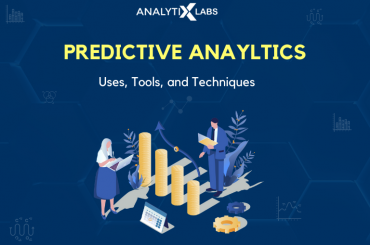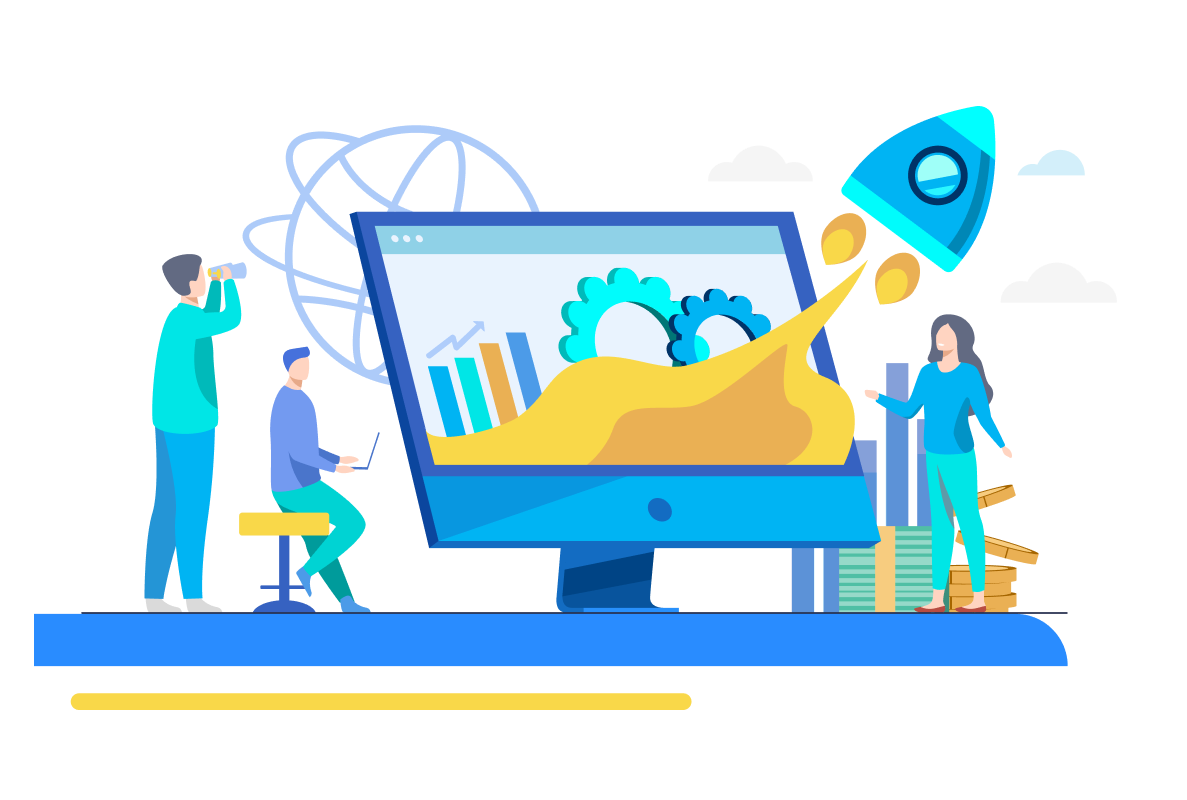Data analytics career is an emerging field that has gained immense popularity in recent years. With the rise of technology and the growth of data-driven businesses, the demand for skilled data analysts has increased significantly.
Using various tools and techniques, data analytics help uncover hidden trends, recognize patterns, and understand correlations to work with informed decision-making, driving businesses to efficiency.
This article will discuss “Is data analyst a good career?” and explore its career path. We will discuss the data analyst qualifications and skills for data analyst required to navigate your way toward a successful career in data analytics. By the end of this career guide, you will understand how to be a data analyst, where data analysts work, and the answer to a prominent question: “Is data analytics a good career choice”?
Download the Data Science Bible – The Ultimate Guide to Becoming a Data Scientist
What is Data Analytics?
The 21st century has witnessed an extraordinary phenomenon—the rapid and voluminous surge in data generation. In perspective, a staggering 90% of the world’s total data has emerged in just the past few years.
The meteoric rise and spread of the internet, accompanied by the massive decrease in the storage cost of data, which has fallen from $300,000 for a GB (gigabyte) in 1981 to $0.10 by 2010, speaks volumes of the data revolution. The availability of huge amounts of data has led to various techniques that allow us to use this data to achieve numerous goals.
These techniques of analyzing data in modern times are collectively called Data Analytics. As this term is in high usage and is thrown around in almost all business domains, with each interpreting it in its way, it is easier for its definition to get lost in the translation.
From a non-domain-specific point of view, Data Analytics means the scientific usage of numerous statistical and programming tools to analyze the data through statistics, mathematics, and visualization.
Having tremendous applications and demand in the industry, we present you our exclusive courses in the domain of Data Analytics:
From basics to advanced, our courses will help you clear all the concepts.
Data Visualization and Analytics
Have some more questions? Book a demo with us, and let us help you make the right choice.
The Growth of Data Analytics
According to Statista, the worldwide data generated is projected to reach 180 zettabytes by 2025, up from just 64.2 zettabytes in 2020. Furthermore, a study by IDC estimates that Big Data and Analytics spending will reach $70.7 Billion by 2026. These numbers highlight the profound impact of Data Analytics in today’s technology-driven landscape. It also explains the rising demand for skilled Data Analysts, making it a promising career option.
- Evolution of Data Analytics

Different Types of Analytics
By now, you have a fair amount of understanding about Data Analytics and may realize the term Data Analytics is a broad term. To understand it further, you should also know about different types of Data Analytics, which is best summarised as follows:
- Descriptive analytics answers what has happened
- Diagnostic analytics answers why it happened
- Predictive analytics answers what could happen next
- Prescriptive analytics answers what to do next

Who is a Data Analyst?
Data analysts use their skills and expertise in interpreting, analyzing, and visualizing large volumes of data to extract meaningful insights. They identify data trends, patterns, and correlations to help organizations make informed decisions.
A data analyst’s job involves gathering, cleaning, and organizing data from various sources like databases and spreadsheets. They use statistical methods, visualization tools, and programming languages like Python or R to identify trends and patterns. The key tasks include generating reports, interactive dashboards, and presentations to convey findings to non-technical audiences.
Also read: Logistic Regression Using Python [Practical Use Case]
Furthermore, Data Analysts contribute significantly to data-driven strategy development, aiding businesses in optimizing operations. The insights can also enhance products or services and achieve overarching objectives. Possessing strong analytical acumen, attention to detail, and proficiency in data tools and technologies is paramount for a prosperous career in data analytics.
What do Data Analysts do?

Professionals who wish to understand that “is data analyst is a good career” must look at the work of a data analyst. They work with large databases and apply statistical methods to extract useful insights from the data. Turning raw information into actionable intelligence, data analysts drive business decisions to enhance overall performance.
Data Analysts are responsible for various essential tasks centered on data manipulation and analysis. Their primary duties include:
- Data Collection : Data Analysts gather information from various sources, such as databases, surveys, or web scraping, ensuring the data is accurate and relevant to the task.
- Data Cleaning : To ensure reliability, they identify and rectify errors, inconsistencies, and missing data values. Cleaning involves removing duplicates and outliers.
- Data Transformation : Analysts may need to reshape the data, aggregate it, or transform it for analysis.
- Data Analysis : The core of a Data analyst’s work is using statistical techniques to identify patterns, trends,and correlations within the data. They may employ tools like regression analysis, clustering, or hypothesis testing.
- Data Visualization : Communicating findings effectively is crucial. Analysts create visual representations like charts, graphs, and dashboards to make complex data understandable to non-technical stakeholders.
- Reporting : They generate reports and presentations summarizing their analyses, highlighting key insights, and providing actionable recommendations.
- Decision Support : Data Analysts assist decision-makers by providing data-driven insights. They enable companies to make informed choices about strategies, operations, and improvements.
Now that we have discussed what data analysts do, let us address the question, “is data analyst a good job?” The answer is yes; however, it depends on your interests and skills.
Where do Data Analysts Work?
Data Analysts are in high demand across industries, contributing to decision-making in corporate offices, technology companies, healthcare, and financial institutions. They enhance services by analyzing user behavior, optimizing patient care, and managing large datasets.
E-commerce businesses utilize Data Analysts to improve customer experiences and efficient inventory management. The public sector, consulting firms, and education also benefit from their policy analysis, data-driven decision-making, and institutional planning expertise.
Even nonprofits harness Data Analysts’ power to measure their programs’ impact and make data-informed decisions. Research institutions benefit from Data Analysts’ contributions to scientific discoveries, social research, and data-driven studies.
Data Analyst Qualifications
To build a successful data analyst career, one needs a bachelor’s degree in mathematics, statistics, computer science, economics, or data science. Advanced positions often require a master’s degree or higher. Strong analytical skills are crucial for Data Analysts to excel in breaking down complex data sets, identifying patterns, and deriving meaningful insights.
Technical proficiency is one of the essential data analyst requirements. Knowing programming languages like Python or R is necessary for a successful data analytics career. In addition to the above-mentioned data analyst requirements, familiarity with data analysis tools like SQL and Excel is usually expected even for entry-level positions.
Data Analysts require a strong understanding of statistical concepts for precise data interpretation. Expertise in data visualization tools like Tableau or Power BI is essential to communicate findings to diverse stakeholders. Additionally, they must excel in problem-solving, addressing complex business challenges with data-driven solutions, and possess strong communication skills for presenting insights through reports and presentations.
Lastly, a commitment to continuous learning is crucial for data analyst careers. Given the ever-evolving nature of data analysis, there is a pressing need to stay updated with emerging data analytics tools and techniques.
Also read: How Many Data Analyst Interview Questions Can You Answer?
Data Analyst Skills

If you are willing to pursue a career as a data analyst, it is important to understand the key skills for a data analyst profile. While having a strong background in statistics and coding is essential, several other skills can make or break your career as a data analyst.
- Analytical Skills: Data Analysts need to excel in breaking down complex data sets, spotting patterns, and drawing meaningful conclusions. This involves an eye for detail and thinking critically about data.
- Technical Proficiency: Proficiency in programming languages such as Python or R is essential. Data Analysts often use these languages to manipulate and analyze data. Additionally, familiarity with data manipulation tools like SQL is crucial for querying and organizing data effectively.
- Data Visualization: Data Analysts must be skilled in data visualization tools like Tableau, Power BI, or Matplotlib in Python. Creating clear and compelling charts and graphs is essential for effectively communicating insights to both technical and non-technical stakeholders.
- Statistical Knowledge: An understanding of statistical concepts and methodologies is necessary for accurate data interpretation. Data Analysts use statistical techniques to validate hypotheses, perform A/B testing, and make data-driven decisions.
- Problem-Solving Abilities: Data Analysts often tackle complex business challenges. They need strong problem-solving skills to identify the root causes of issues and provide data-driven solutions that can significantly impact the organization.
- Communication Skills: Effective communication is vital for conveying insights through reports and presentations. Data Analysts must translate technical findings into clear, actionable recommendations for non-technical stakeholders.
- Adaptability: The field of data analysis is constantly evolving. Data Analysts need to be adaptable and open to learning new tools and techniques to stay current in their role.
- Attention to Detail: Data cleaning and accuracy are critical aspects of the job. Data Analysts must pay close attention to detail to ensure that the data they work with is reliable and error-free.
- Critical Thinking: Data Analysts must possess critical thinking skills to identify hidden patterns, trends, and anomalies within data sets. This skill helps in making data-driven decisions and solving complex problems.
Also read: Of What Use Is Tableau to a Data Analyst?
Why Choose a Career in Data Analytics?
Data analytics is a rapidly growing field, and it is no surprise that many people consider it a career option. But is data analytics a good career option? So, the answer is yes.
Here are some reasons why choosing a data analytics career path is a wise decision:
-
High Demand for Data Analysts
With the rise of big data and technology, the demand for professionals who can interpret and analyze large data sets is increasing. Companies in all industries seek skilled data analysts to help them make data-driven decisions and improve their overall performance. The high demand also means that data analysts can expect competitive salaries and job security.
-
Constantly Evolving Field
Data analytics is an ever-changing field, with new tools, technologies, and techniques constantly emerging. It means that data analysts can continuously learn and stay on top of with the latest trends in their field. It also makes the work more interesting and challenging, as there is always something new to explore.
-
Variety of Industries to Work In
Data analytics skills are in demand across various industries, such as healthcare, finance, marketing, and government. It allows data analysts to work in a sector that aligns with their interests and passions. It also allows for career flexibility, as data analysts can easily transition between industries if they wish to explore new areas.
-
Impactful Work
Data analytics plays an important role in decision-making processes within organizations. As a data analyst, you can directly contribute to a company’s success by providing valuable insights and recommendations based on data analysis. It can create a sense of fulfillment and impact in your work, making it more meaningful.
-
Potential for Growth
Data analytics is a vast field with various specializations, such as business intelligence, machine learning, and data visualization. As you gain experience and expertise in these areas, you can take on more challenging roles and have an enriching data analytics career path. There is also the potential to move into managerial positions or even start your data analytics consultancy.
Data analyst careers are highly rewarding, with many advantages like job security, meaningful work, continuous learning, financial rewards, and versatility.
Data Analyst Career Paths
The data analyst career path offers diverse opportunities, catering to various interests and skill sets. Here’s a closer look at the possible data analytics career paths a professional may take:
- Entry-Level Data Analyst Jobs: Most data analysts begin their journey at this stage. Entry-level professionals focus on data collection, cleansing, and basic analysis. It is a foundational role that equips individuals with essential skills.
- Mid-Level or Senior Data Analyst Position: With experience, data analysts progress to mid-level or senior roles. They take on more complex projects, handle larger datasets, and often serve as mentors for junior analysts.
- Data Scientist: Data scientists delve deeper into data analysis, using advanced statistical and machine learning techniques to extract insights. They solve complex problems and develop predictive models.
- Management: Some data analysts transition into management roles, becoming data or analytics managers. They oversee teams, projects, and strategies, ensuring data-driven decisions align with organizational goals.
- Consultant: Data analysts can pursue consulting roles, working for firms that provide data-driven solutions to clients in diverse industries. Consultants tackle complex problems and offer actionable recommendations based on data analysis.
- Specialist Roles: Data analysts can specialize in various domains:
- Financial Analysts: Analyze financial data, assess investment opportunities, and manage risk.
- Healthcare Analysts: Work with medical data to improve patient care and healthcare processes.
- Machine Learning Analysts: Focus on building machine learning models for predictive analytics.
- Social Data Analysts: Analyze social media data to extract insights for marketing or research.
- Insurance Underwriting Analysts: Assess insurance risks and pricing using data analysis.
- Digital Marketing Analysts: Use data to optimize marketing strategies and campaigns.
- Systems Analysts: Analyze and improve IT systems and infrastructure.
- Operations Analysts: Optimize business operations using data-driven insights.
Is Data Analysis Easy or Hard?
Data analysis is diverse, and its complexity depends on factors like tools, expertise, and intricacy. Simple tasks like creating charts may seem easy, but delving into complex analyses using advanced statistics or machine learning requires a solid foundation in mathematics and programming.
Moreover, the true challenge of an analytics career lies in interpreting results and articulating insights effectively, a skill set often overlooked. So, whether data analysis feels easy or hard hinges on context, data complexity, and the analyst’s proficiency. Emphasizing the art of interpretation and communication makes it uniquely valuable.
Can I Be a Data Analyst Without a Degree?
If you are considering a career as a data analyst, one of the questions that may come to mind is whether or not you need a degree to be successful. While having a degree in fields like mathematics, statistics, or computer science can certainly give you an edge in the job market, it is not always necessary to have one to become a data analyst. In fact, there is a growing trend of companies hiring data analysts based on their skills and experience rather than their formal education.
Success in your data analytics career is attainable without a formal degree by focusing on the following key aspects:
- Skill Development : Dedicate time to mastering essential data analysis tools like Python, R, or SQL. Build a portfolio showcasing practical projects that highlight your abilities.
- Certifications : Consider pursuing relevant certifications from Microsoft, Google, or AnalytixLabs. These credentials validate your expertise to potential employers.
- Networking : Attend data-related meetups, conferences, and online communities. Networking can help you connect with professionals who may offer guidance or job opportunities.
- Internships or Freelancing : Gain practical experience through internships or freelance work. Real-world projects demonstrate your competence to employers. You can also build your network and get recommended by satisfied clients.
- Industry Knowledge : Stay updated with the latest trends, techniques, and tools used in data analysis by regularly reading industry publications or taking online courses. Practical skills and industry knowledge will set you apart from other job seekers.
Data Analytics Career Options

As technology advances and data becomes even more integral to business decision-making, the demand for skilled data analysts will only grow. Among the career paths for those interested in data analytics are:
-
Data Analyst
A data analyst organizes, collects, and interprets data to identify patterns and trends used to make important business decisions. They work with large datasets and use various statistical and analytical techniques to extract valuable insights from the data. A data analyst should have a strong understanding of databases, programming languages, and statistical methods.
-
Business Intelligence Analyst
A business intelligence (BI) analyst analyzes complex business data and provides insights to help organizations make strategic decisions. They use data warehouses, dashboards, and reporting software to collect and analyze data from various sources. A BI analyst should have a deep understanding of business processes and strong analytical and communication skills.
-
Data Scientist
A data scientist is an advanced role that requires a high level of technical expertise in data analytics and machine learning. Their responsibilities include designing and implementing algorithms to analyze large datasets and developing predictive models to forecast future trends. A data scientist should have a strong background in computer science, mathematics, and statistics.
-
Data Engineer
A data engineer is responsible for designing, creating, and maintaining the infrastructure for storing and processing large volumes of data. Working closely with data scientists and analysts ensures that the data pipelines are efficient and reliable. A data engineer should have strong coding skills and knowledge of databases and big data technologies.
-
Data Architect
The role of a data architect is to design and manage the overall structure of an organization’s data assets. They analyze business requirements and design a blueprint for storing, organizing, and accessing data. A data architect should understand database management systems and have excellent problem-solving skills.
-
Data Visualization Specialist
A data visualization specialist is responsible for designing visual representations of data using graphs, charts, and dashboards. They combine their knowledge of design principles with analytical skills to present complex data clearly and easily. A data visualization specialist should have strong coding skills and a creative eye for design.
In addition to these specific data analytics career paths, there are opportunities for data analysts in various industries like finance, healthcare, marketing, and more. Data analytics constantly evolves and offers diverse job opportunities to those with the right skill set.
Types of Data Analyst

The key types of data analysts are:
- Business Intelligence Analysts: Business Intelligence Analysts transform data into insights for strategic business decisions through reports and dashboards.
- Statistical Analysts: Experts in advanced statistical methods are known as Statistical Analysts. They uncover trends and patterns in data using techniques like regression analysis and hypothesis testing.
- Financial Analysts: Focused on financial data, Financial Analysts guide investment choices, risk management, and financial planning.
- Healthcare Analysts: Healthcare Analysts optimize healthcare operations and patient care by analyzing medical records and billing data.
- Marketing Analysts: Specializing in customer behavior and market trends, Marketing Analysts assess marketing campaign performance.
- Machine Learning Analysts: Machine Learning Analysts are experts who build predictive models using machine learning algorithms for applications like recommendation systems and fraud detection.
- Operations Analysts: Operations analysts optimize business processes by analyzing efficiency, cost-effectiveness, and performance data.
- Consulting Analysts: Employed by firms offering data-driven solutions, Consulting Analysts tackle complex problems in various industries using data analysis.
Which Certifications Can Help You Become a Data Analyst?
Some of the most popular and recognized certifications for data analysts are:
Microsoft Certified: Data Analyst Associate
Data Analyst Associate is a certification offered by Microsoft. It is designed for individuals looking to excel in data analysis using Microsoft’s suite of tools. It demonstrates data analysis, visualization, and modeling competence using Power BI and Excel.
Key Topics Covered
- Data cleansing and transformation
- Data modeling and visualization using Power BI
- Querying databases using SQL
- Building and deploying data models
The certification is highly valuable for data analysts working or aspiring to work in organizations that rely on Microsoft’s data analytics tools. It showcases expertise in harnessing Power BI for impactful data visualization and analysis, a skill in high demand in various industries.
Google Data Analytics Certificate
Offered by Google, the Data Analytics Certificate program is an excellent choice for those interested in mastering data analysis techniques using Google’s tools. It focuses on practical skills required for data analysis, including data cleaning, visualization, and drawing meaningful insights.
Key Topics Covered
- Data collection and transformation
- Data analysis and visualization with Google Sheets
- Basic SQL queries
- Creating data-driven presentations
Google’s certificate is ideal for individuals aiming to work with Google’s data analytics tools and those looking for a practical, hands-on approach to data analysis. It equips candidates with essential skills for entry-level data analyst positions.
Associate Certified Analytics Professional
The Associate Certified Analytics Professional (aCAP) designation represents the initial step in an individual’s analytics career journey. It signifies a foundational understanding of the analytics process, even for those who may not yet possess practical experience.
The certification begins a pathway leading to the elite Certified Analytics Professional (CAP) designation. aCAP holders demonstrate their analytical prowess by successfully passing an exam based on analytics practice while committing to upholding the highest ethical standards within the field.
Key Topics Covered
- Data exploration and visualization
- Predictive modeling
- Data-driven decision-making
- Business problem framing and solution development
Unlike certifications tied to specific vendors or technologies, aCAP is vendor- and technology-neutral, emphasizing a comprehensive understanding of analytics concepts across various domains.
The certification sets a solid foundation for aspiring analytics professionals, accessible to individuals with varying educational backgrounds and professional experiences.
Frequently Asked Questions
-
Is data analytics a good career?
Data analytics can become a rewarding career path, especially if you are interested in job roles such as data extraction and making data-driven decisions. It offers varied opportunities across numerous industries. The demand for data analysts is on a rise with increased demand for data handling.
Data analytics is a rapidly evolving field that offers continuous learning and skill development opportunities. However, you must stay updated with the latest technology, tools, and techniques to remain competitive in the job market.
-
Is data analytics an IT job?
Data analytics is not exclusively an IT job. It is closely related to the field of information technology. Primarily, it involves collecting, processing, and analyzing data to extract valuable insights and support decision-making.
Data analytics primarily focuses on data interpretation and generating valuable insights. It requires strong analytical skills, statistics knowledge, and business acumen. Being a cross-functional role, it involves collaboration with various departments within an organization to understand their needs and provide insights using data.
-
How is the career in data analytics?
A career in data analytics is quite promising and fulfilling, but excelling in the career path depends on your skills and adaptability. It often offers competitive salaries, holding demands across various industries as organizations seek data-driven decisions.
However, the field evolves rapidly and requires professionals to stay updated with technology. In addition, there are some essential skills for data analysts, like strong analytical, statistical, and programming capabilities and data visualization.
-
Is data analytics a well-paid job?
Data analytics offers high-paying job roles as it involves high-level skills in handling and interpreting data. The salary received is often competitive but varies based on factors like industry, location, and years of experience. For example, in regions with strong demand for data analysts and high cost of living, salaries tend to be higher.

